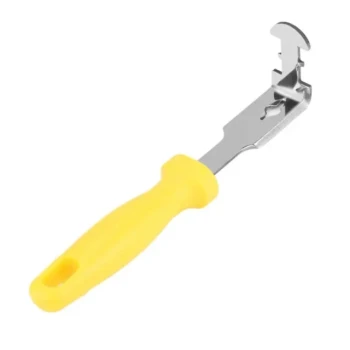At the end of the trial, the bee colonies were in a state of strong growth and were considered "well-filled." They were actively building comb into the upper rim space of their hives and were ready for the addition of new boxes, known as supers, to accommodate their expansion.
The core takeaway is that the colonies were thriving. Their significant growth, coupled with the fact they hadn't fully consumed their supplementary food, indicates they were successfully gathering ample natural resources and were poised for continued expansion.
Interpreting Colony Health and Growth
To understand why these observations are significant, we need to look at the key indicators of a healthy, expanding honeybee colony. The trial's conclusion points to several positive signs.
Indicator 1: Comb Construction and Space Needs
The most direct evidence of the colonies' health was their physical expansion.
Building into Rim Space Colonies building new wax comb into the very top available space (the rim space) is a clear sign that they are running out of room. This is a behavior of a populous and productive colony.
Needing Supers The assessment that the colonies needed "supers"—additional boxes placed on top of the main hive body—is a direct consequence of this growth. Beekeepers add supers to give the colony more space for storing honey and expanding the brood nest.
Indicator 2: Resource Management
The state of the colonies' food stores provides insight into their foraging success and nutritional health.
Pollen Substitute Consumption The colonies had not finished their pollen substitute patties. This is a crucial detail.
Pollen is the bees' primary source of protein, essential for raising young bees (brood). The fact that the supplementary pollen was not fully consumed suggests the bees were finding plenty of natural pollen from flowering plants.
This indicates that the external environment was rich in resources and the colonies' foragers were successfully bringing those resources back to the hive.
The Foundation for Success: Initial Setup
The final state of the colonies is a direct result of the meticulous setup at the beginning of the trial. Understanding the starting conditions helps explain the successful outcome.
Ensuring Uniformity and Strength
The trial began with a focus on creating balanced and equal colonies.
Equalized Brood and Stores Each colony was standardized to have three frames of brood, one frame of food (honey/pollen), and one frame of drawn comb. This equalization ensured that no single colony had an unfair advantage and that all started from a comparable point of strength.
Consistent Genetics All colonies were led by recently-mated queens from the same mother. This controlled for genetic variables, ensuring that differences in colony performance were more likely due to environmental factors or the trial's variables, not queen quality.
How Colony Strength Was Assessed
The methods used to grade the colonies were designed for consistency and accuracy, providing reliable data on their condition.
The "Tipping" Method
Colony strength was graded by a single person tipping the hive boxes back in the early morning.
Counting Bee-Filled Gaps The grader counted the number of "interstices" (the gaps between frames) that were filled with bees. This assessment was done before the bees' morning cluster broke apart, providing a consistent snapshot of the population size.
Using a Sole Grader Having a sole grader perform this task is critical for reducing variability in judgment. It ensures that the assessment criteria are applied uniformly across all colonies throughout the trial.
Key Takeaways for Beekeepers
The results of this trial highlight several fundamental principles of good apiary management.
- If your primary focus is colony growth: Standardizing the strength of your hives at the start of a season provides a strong and predictable foundation for expansion.
- If your primary focus is assessing hive health: Observing comb construction at the top of the frames is a fast, reliable indicator that a colony is running out of space and needs more room.
- If your primary focus is nutrition management: Monitoring the consumption of supplemental feed, like pollen patties, can tell you how much natural forage your bees are successfully gathering.
Ultimately, the trial's success demonstrates that well-equalized colonies with strong genetics, placed in a resource-rich environment, will expand rapidly.
Summary Table:
| Key Indicator | Observation at Trial End | Significance for Beekeepers |
|---|---|---|
| Comb Construction | Building into upper rim space | Colony is populous, productive, and needs more room (supers) |
| Resource Management | Pollen substitute patties not fully consumed | Successful natural foraging; environment is resource-rich |
| Colony Strength | Hives graded as "well-filled" and strong | Standardized starting conditions led to predictable, robust growth |
| Expansion Readiness | Ready for addition of supers | Apiary is primed for honey production and further population increase |
Ready to build a thriving, expansion-ready apiary like the one in this trial?
At HONESTBEE, we supply the high-quality beekeeping supplies and equipment that commercial apiaries and distributors rely on for success. Our wholesale-focused operations ensure you get the durable, effective gear needed to standardize your hives, manage growth, and maximize honey production.
Let us help you achieve similar results. Contact our team today to discuss your specific needs and learn how our products can support your operation's health and expansion.
Related Products
- HONESTBEE Advanced Ergonomic Stainless Steel Hive Tool for Beekeeping
- Professional Dual-End Stainless Steel Hive Tool for Beekeeping
- Professional Grade Foldable Beehive Handles
- Heavy-Duty Stainless Steel Clip-On Frame Perch
- Heavy Duty Stainless Steel Frame Cleaner with Plastic Handle
People Also Ask
- Why is wax dipping better than painting for bee equipment? For Long-Lasting Protection
- What are some common uses of a hive tool? Essential Multi-Purpose Tool for Every Beekeeper
- What are the features of a regular hive tool? The Essential Multi-Tool for Every Beekeeper
- How can a modified hive tool be used to clean the smoker? A Guide to Reliable Beekeeping
- Why is regular beehive maintenance important? The Key to Colony Health and Honey Production



















